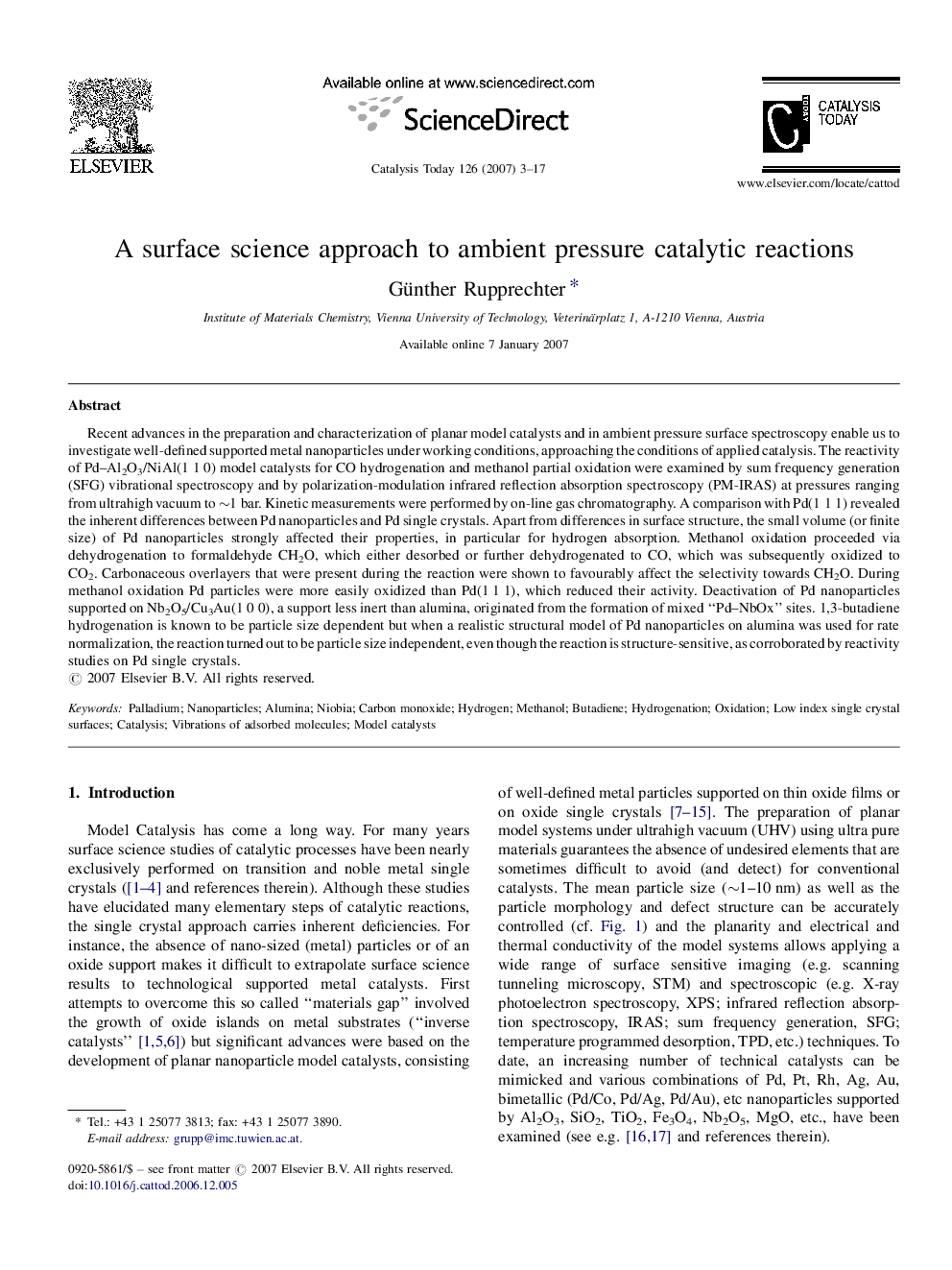| Article ID | Journal | Published Year | Pages | File Type |
|---|---|---|---|---|
| 57952 | Catalysis Today | 2007 | 15 Pages |
Recent advances in the preparation and characterization of planar model catalysts and in ambient pressure surface spectroscopy enable us to investigate well-defined supported metal nanoparticles under working conditions, approaching the conditions of applied catalysis. The reactivity of Pd–Al2O3/NiAl(1 1 0) model catalysts for CO hydrogenation and methanol partial oxidation were examined by sum frequency generation (SFG) vibrational spectroscopy and by polarization-modulation infrared reflection absorption spectroscopy (PM-IRAS) at pressures ranging from ultrahigh vacuum to ∼1 bar. Kinetic measurements were performed by on-line gas chromatography. A comparison with Pd(1 1 1) revealed the inherent differences between Pd nanoparticles and Pd single crystals. Apart from differences in surface structure, the small volume (or finite size) of Pd nanoparticles strongly affected their properties, in particular for hydrogen absorption. Methanol oxidation proceeded via dehydrogenation to formaldehyde CH2O, which either desorbed or further dehydrogenated to CO, which was subsequently oxidized to CO2. Carbonaceous overlayers that were present during the reaction were shown to favourably affect the selectivity towards CH2O. During methanol oxidation Pd particles were more easily oxidized than Pd(1 1 1), which reduced their activity. Deactivation of Pd nanoparticles supported on Nb2O5/Cu3Au(1 0 0), a support less inert than alumina, originated from the formation of mixed “Pd–NbOx” sites. 1,3-butadiene hydrogenation is known to be particle size dependent but when a realistic structural model of Pd nanoparticles on alumina was used for rate normalization, the reaction turned out to be particle size independent, even though the reaction is structure-sensitive, as corroborated by reactivity studies on Pd single crystals.
